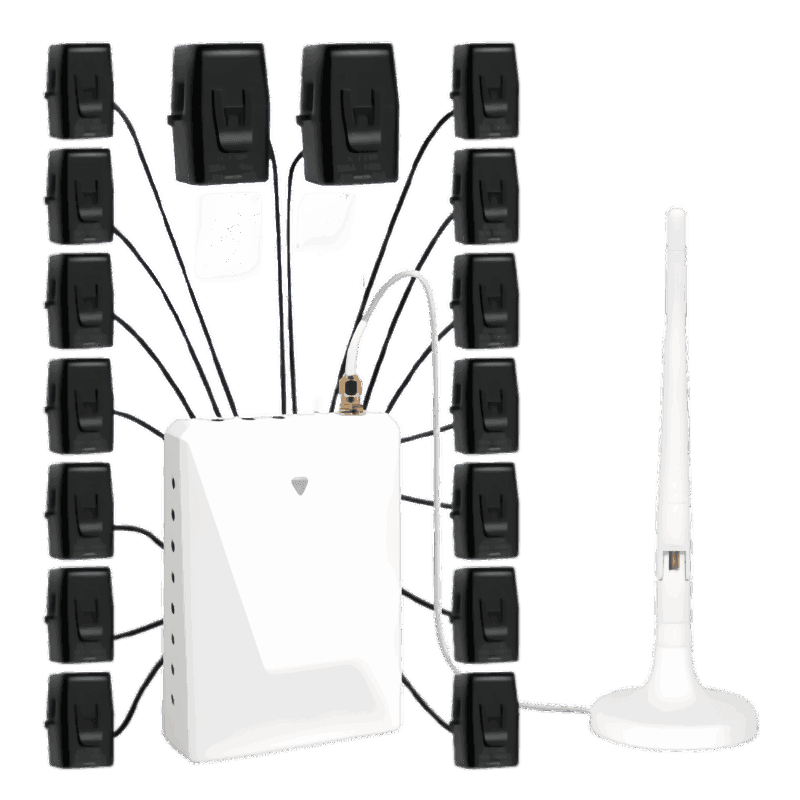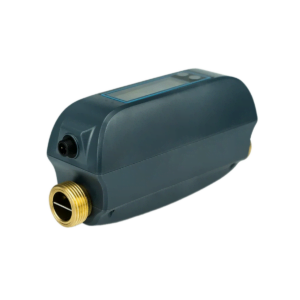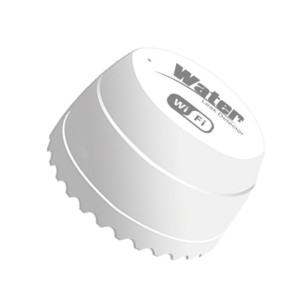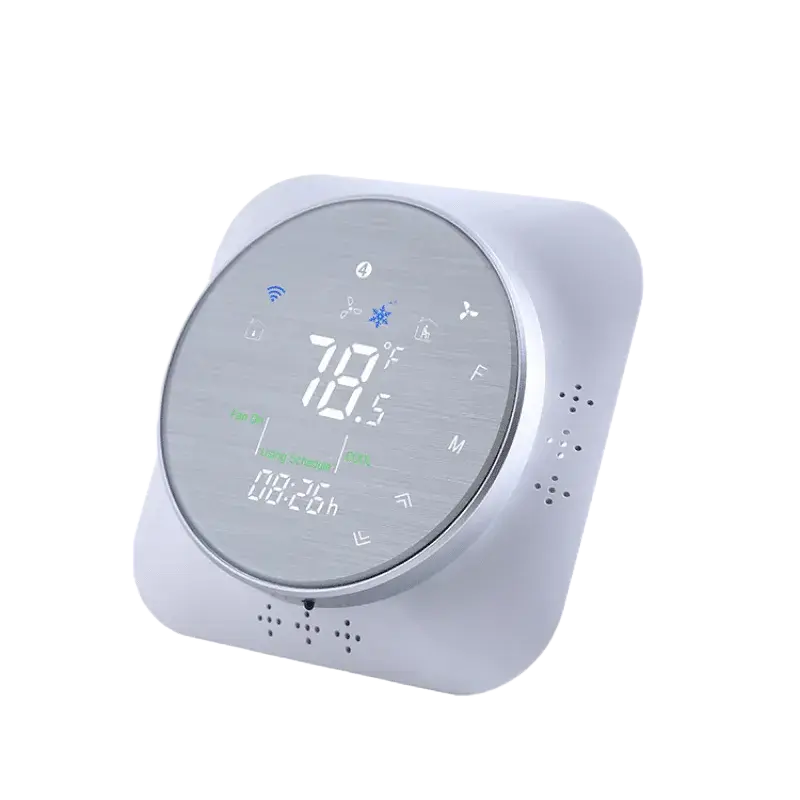점점 더 통합이 증가함에 따라태양광 패널, 배터리 저장 장치, EV 충전소 및 가전 제품주택 소유자는 종종 어려움을 겪습니다.그들의 에너지 흐름에 대한 명확한 그림. 이해에너지가 생성, 저장, 소비되는 곳효율성을 최적화하고 전기 비용을 절감하는 데 중요합니다.
A스마트 에너지 미터제공합니다실시간 모니터링of:
✅그리드 전기 사용량– 전력망에서 끌어온 전력을 추적합니다.
✅태양광 발전– 태양광 발전량이 얼마나 생산되는지 모니터링합니다.
✅배터리 저장 상태– 배터리에 저장되고 방전되는 에너지를 확인하세요.
✅EV 충전 소비량– 전기 자동차가 얼마나 많은 에너지를 사용하는지 알아보세요.
✅가전제품 전력 사용량– 에너지를 많이 소모하는 장치를 식별합니다.
이 가이드에서는 다음 내용을 설명합니다.
🔹집 에너지 시스템에 스마트 미터를 설치하는 방법
🔹전체 가시성을 위한 에너지 모니터링 구조화 방법
🔹AI 기반 스마트 미터는 다음과 같습니다.Grus 분할 위상 전기 모니터에너지 사용을 최적화할 수 있습니다
1. 스마트 홈의 에너지 흐름 이해
설치하기 전에스마트 에너지 미터, 이해하는 것이 필수적입니다.현대 주택의 에너지 흐름통합된 것:
1️⃣전력망– 태양광 발전이 부족할 때 전기를 공급합니다.
2️⃣태양광 패널– 낮 동안 재생 에너지를 생산합니다.
3️⃣배터리 저장– 야간 사용을 위해 여분의 태양열을 저장합니다.
4️⃣EV 충전소– 차량 충전에 상당한 에너지를 소모합니다.
5️⃣가전제품– 일상 업무에 에너지가 필요한 다양한 장치.
1.1 태양광 및 배터리 저장 장치를 갖춘 스마트 홈의 에너지 흐름도
graph TD; %% Top Section - Power Sources A[Power Grid] -->|CT1: Measures Import/Export Power| B[Main Panel] F[Solar Inverter] -->|CT2: Measures Solar Output| B F -->|CT6: Charges Battery| E[Battery Storage] E -->|CT3: Discharges Power| B %% Center - Main Panel as Distribution Hub B -->|CT5: Tracks Total Home Power| C[Home Appliances] B -->|CT4: EV Charging Load| D[EV Charger] %% Labels for Phase Type B -.->|Split-Phase 240V (L1, L2, Neutral)| H[Split-Phase System] B -.->|Single-Phase 120V (L1, Neutral)| I[Single-Phase System]
CT 클램프 배치 및 라인 설명
| CT 클램프 | 설치 라인 | 모니터 | 목적 |
|---|---|---|---|
| CT1 | 그리드와 메인 패널 사이 | 그리드 전력 수입/수출 | 그리드에서 얼마나 많은 전기가 인출되거나 그리드로 다시 전송되는지 추적합니다. |
| CT2 | 태양광 인버터와 메인 패널 사이 | 태양광 발전량 | 실시간 태양광 발전량 측정 |
| CT3 | 배터리와 메인 패널 사이 | 배터리 방전 | 저장된 에너지가 얼마나 사용되고 있는지 추적합니다. |
| CT4 | EV 충전기와 메인 패널 사이 | EV 충전 부하 | 전기 자동차에서 사용되는 에너지를 식별합니다. |
| CT5 | 메인 패널과 홈 부하 사이 | 총 가정 소비량 | 전체 가구 전력 사용량을 추적합니다. |
| CT6 | 태양광 인버터와 배터리 저장 장치 사이 | 배터리 충전 | 배터리에 얼마나 많은 태양 에너지가 저장되어 있는지 측정합니다. |
🔹주요 통찰력:A스마트 에너지 미터(G)는 다음과 같이 위치해야 합니다.모든 주요 에너지원을 모니터링합니다그리고 그들의 흐름집과 집 사이.
2. 에너지 가시성을 위한 스마트 에너지 미터 설치 위치
에너지 소비 및 발전에 대한 전체적인 관점을 얻으려면 스마트 미터를 설치해야 합니다.전략적 위치:
2.1 권장 스마트 미터 설치 지점
| 위치 | 목적 | 모니터링 대상 | 추천 미터 |
|---|---|---|---|
| 그리드 연결(메인 패널) | 그리드로 수입/수출되는 전기를 추적합니다. | 그리드 전력 사용 및 순계량 측정 | 분할상 전기 모니터 |
| 태양광 인버터 출력 | 태양 에너지 생산 측정 | 실시간 태양광 발전 | 클램프온 스마트 미터 |
| 배터리 저장 입력/출력 | 충전/방전 주기를 모니터링합니다. | 배터리 충전 상태 및 사용 | 양방향 전력계 |
| EV 충전소 | EV 충전 소비량 추적 | 세션당 에너지 및 비용 청구 | 전용 EV 에너지 모니터 |
| 가전제품 패널 | 에너지를 많이 소모하는 장치 식별 | 개별 가전제품 사용 | 스마트 플러그 미터 또는 서브패널 모니터 |
💡가장 좋은 솔루션:TheGrus 분할 위상 전기 모니터모니터링 할 수 있습니다그리드 전력, 태양광, 배터리 및 가정 소비실시간으로.
3. 단계별 스마트 에너지 미터 설치 가이드
3.1 그리드 연결부(메인 패널)에 스마트 미터 설치
📌목적:총 전력 측정그리드에서 가져오고 그리드로 내보냄.
설치 단계:
1️⃣안전을 위해 주 회로 차단기를 끄세요.
2️⃣전기 패널을 열고 주요 전력선을 확인하세요.
3️⃣들어오는 전력선 케이블 주위에 클램프 센서를 부착합니다.
4️⃣센서를 스마트 에너지 모니터에 연결합니다.
5️⃣장치를 보호하고 전원을 복구하세요.
6️⃣실시간 추적을 위해 스마트 홈 앱과 함께 사용하세요.
3.2 태양광 패널 출력을 위한 스마트 미터 설치
📌목적:길실시간 태양광 발전사용을 최적화하려면.
설치 단계:
1️⃣태양광 인버터의 출력선을 찾으세요.
2️⃣DC 또는 AC 전력 출력을 측정하려면 스마트 미터를 부착하세요.
3️⃣미터를 가정용 에너지 모니터링 소프트웨어와 통합합니다.
4️⃣데이터를 분석하여 태양광 효율성을 추적하고 전력 소비를 조정합니다.
3.3 배터리 저장을 위한 스마트 미터 설치
📌목적:감시 장치가정용 배터리에 저장되고 방출되는 에너지.
설치 단계:
1️⃣양방향 스마트 미터를 배터리 시스템에 연결합니다.
2️⃣충전선과 방전선 모두에 클램프 센서를 부착합니다.
3️⃣스마트 미터 대시보드를 통해 배터리 효율성을 모니터링하세요.
3.4 EV 충전을 위한 스마트 미터 설치
📌목적:길EV 충전 전력 소비량전기 사용을 최적화합니다.
설치 단계:
1️⃣EV 충전 회로에 스마트 에너지 모니터를 설치하세요.
2️⃣최대 전기 요금을 피하기 위해 시간 기반 충전을 구성하세요.
3️⃣스마트 미터 대시보드를 사용하여 세션별 에너지 비용을 추적하세요.
graph TD A[Smart Energy Meters] -->|Monitor Usage| B[Grid] A -->|Monitor Solar Output| C[Solar Inverter] A -->|Monitor Battery Charge/Discharge| D[Battery Storage] A -->|Monitor EV Charging| E[EV Charger] A -->|Monitor Home Appliances| F[Smart Home Dashboard]
🔹주요 통찰력:여러 개의 스마트 미터를 설치하면모든 주요 에너지원에 대한 실시간 통찰력.
다음 단계
이제 우리는 이해한다스마트 에너지 미터를 어디에, 어떻게 설치하나요?, 안에2부, 우리는 다음에 대해 논의할 것입니다:
📌에너지 최적화를 위한 스마트 미터 데이터 분석 방법
📌AI 기반 통찰력을 활용하여 효율성 개선
📌 **왜Grus 분할 위상 전기 모니터스마트 홈 에너지 추적을 위한 최고의 선택입니다
4. 에너지 최적화를 위한 스마트 미터 데이터 분석 방법
일단 당신의스마트 에너지 미터그리드, 태양광 패널, 배터리 저장 장치, EV 충전소 및 가전제품에 설치되면 다음 단계는 다음과 같습니다.데이터를 효과적으로 이해하고 활용하기.
스마트 미터 데이터를 분석하면 다음과 같은 이점을 얻을 수 있습니다.
✅발전량 대비 소비량 추적– 태양열이 귀하의 요구 사항을 충족하는지 확인하세요.
✅배터리 사용 최적화– 저장된 전력이 효율적으로 사용되도록 하세요.
✅최대 수요 비용 절감– 무거운 화물은 비수요 시간대로 옮기세요.
✅불필요한 에너지 낭비 방지– 대기 전력 소모를 파악합니다.
4.1 다양한 소스의 스마트 미터 데이터 이해
각 에너지원과 부하량은 고유한 데이터 포인트를 제공합니다. 모니터링해야 할 항목에 대한 개요는 다음과 같습니다.
| 에너지원 | 추적할 주요 지표 | 최적화 전략 |
|---|---|---|
| 그리드 전력 | 소비된 kWh, 사용 시간당 비용 | 비수요 시간대로 부하를 이동하세요 |
| 태양광 패널 | kWh 생성, 실시간 생산 | 자체 소비 극대화, 잉여 전력 저장 |
| 배터리 저장 | 충전/방전 사이클, SOC % | 잉여 태양열을 저장하고 최대 전력량 시 방전 |
| EV 충전 | 세션당 kWh, 충전 비용 | 전기 요금이 싼 시간대에 충전을 예약하세요 |
| 가전제품 | 개별 전력 사용량(W) | 고에너지 장치 식별 및 감소 |
💡예:배터리 저장 데이터가 표시되는 경우밤에는 충전 수준이 낮음, 조정이 필요할 수 있습니다충전 일정낮 동안 남는 태양열을 저장합니다.
4.2 더 나은 의사 결정을 위한 에너지 데이터 시각화
A스마트 에너지 모니터링 대시보드데이터를 통합합니다여러 미터제공하기 위해집의 에너지 흐름에 대한 명확한 그림.
graph TD; A[Smart Meters] -->|Collect Data| B[Energy Monitoring System] B -->|Generates Reports| C[Real-Time Dashboard] C -->|Suggests Energy Optimization| D[User Adjustments]
🔹주요 통찰력:잘 구성된 대시보드는 주택 소유자에게 도움이 됩니다.추세 분석, 비효율성 식별 및 전력 최적화 자동화.
5. 스마트 에너지 효율성을 위한 AI 기반 통찰력
최신 스마트 미터 사용AI 기반 분석에너지 소비를 자동으로 최적화합니다.
5.1 AI 기반 예측 에너지 관리
사용 중머신 러닝 알고리즘AI는 다음을 수행할 수 있습니다.
✅태양광 발전 예측 및 배터리 저장 최적화
✅비정상적인 전력 사용(예: 결함 있는 가전제품)을 감지합니다.
✅에너지 수요에 따라 스마트 홈 기기를 자동으로 조정합니다.
sequenceDiagram participant Smart Meter participant AI Energy System participant Smart Home Devices participant User Smart Meter ->> AI Energy System: Sends real-time energy data AI Energy System ->> Smart Home Devices: Optimizes power distribution AI Energy System ->> User: Sends energy-saving recommendations User ->> AI Energy System: Adjusts energy preferences
💡예:AI가 감지하면피크 시간 동안 높은 전력망 사용, 그것은 할 수 있습니다배터리 저장으로 자동 전환비용을 줄이기 위해.
5.2 스마트 홈 통합을 통한 에너지 효율성 자동화
통합하여스마트 미터~와 함께홈 자동화 플랫폼주택 소유자는 에너지 효율적인 일상을 만들 수 있습니다.
| 자동화 규칙 | 행동 | 결과 |
|---|---|---|
| 태양광 발전이 가정 수요보다 큰 경우 | 배터리 충전 | 잉여 태양에너지를 저장하세요 |
| 배터리가 20% 미만인 경우 | 비수요시간대에 그리드에서 그리기 | 비싼 피크 시간 전력 사용을 최소화하세요 |
| EV 충전 비용이 높은 경우 | 비수요시간대 지연 충전 | 전기 요금을 줄이세요 |
| 가전제품의 전력 소모가 높은 경우 | 알림을 보내거나 자동으로 끄기 | 에너지 낭비 방지 |
🔹주요 통찰력:AI 기반 자동화편안함을 유지하면서 에너지 비용을 절감합니다..
6. Grus 분할상 전기 모니터가 최고의 스마트 에너지 솔루션인 이유
For완벽한 에너지 모니터링가로질러그리드 전력, 태양광, 배터리 저장, EV 충전 및 가전 제품, 그Grus 분할 위상 전기 모니터제공합니다:
✔실시간 에너지 추적– 전력 사용 및 발전에 대한 즉각적인 데이터.
✔기기 수준 모니터링– 고에너지 장치를 식별하고 최적화합니다.
✔AI 기반 에너지 추천– 낭비를 줄이고 전기 요금을 절감하세요.
✔간편한 설치– 비침습적 클램프온 디자인.
✔SmartThings 및 Home Assistant와의 통합– 에너지 효율성을 자동화합니다.
graph TD; A[Grus Smart Meter] -->|Monitors Grid & Solar| B[Real-Time Energy Dashboard] A -->|Optimizes Battery Storage| C[Smart Home System] A -->|Tracks Appliance Power Usage| D[User Reports & Alerts]
🚀왜 Grus을 선택해야 하나요?
- 전기 요금을 최대 25% 절약합니다
- 유틸리티 미터보다 더 심층적인 에너지 통찰력 제공
- 기존 스마트 홈 설정과 완벽하게 통합됩니다.
👉Grus 분할 위상 전기 모니터를 받으세요오늘부터 집안의 에너지를 관리해보세요!
가정 에너지를 관리하는 더 스마트한 방법
와 함께올바르게 설치된 스마트 에너지 미터 시스템, 주택 소유자는추적, 분석 및 최적화그들의 전체 에너지 생태계.
주요 내용:
✅전략적으로 스마트 미터를 설치하세요그리드, 태양광, 저장, EV 충전 및 가정용 부하용입니다.
✅실시간 모니터링을 활용하세요에너지 사용 패턴을 이해합니다.
✅AI 기반 자동화 활용비용 절감 및 효율성을 위해.
✅TheGrus 분할 위상 전기 모니터포괄적인 에너지 관리를 위한 올인원 솔루션입니다.🚀 오늘부터 집의 에너지 시스템을 미래에 대비하세요!



